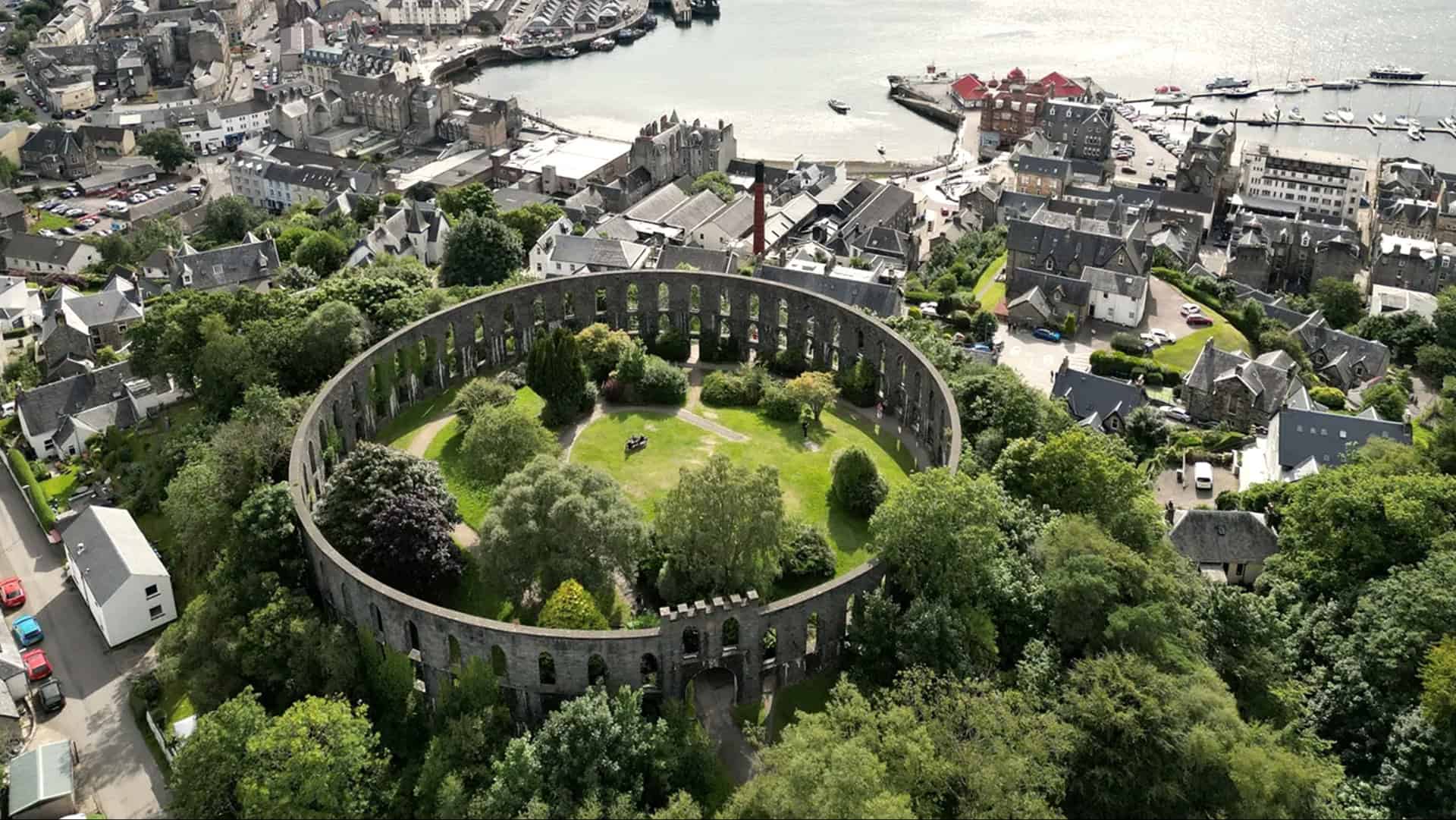McCaig’s Tower stands as a testament to the vision and ambition of John Stuart McCaig.
Perched on Battery Hill, this unique structure, often likened to the Roman Colosseum, overlooks the charming town of Oban, Scotland.
Its construction was driven both by a desire to honor the McCaig family and to provide employment for local stonemasons.
Although unfinished, the tower now serves as a public garden, offering stunning views of the surrounding islands and a peaceful retreat from urban life.
1. Architectural Inspiration

John Stuart McCaig, inspired by Roman and Greek architecture, envisioned a grand structure resembling the Colosseum.
His admiration for classical design is evident in the tower’s two-tiered arches made of Bonawe granite.
Although the central tower and statues were never completed, the outer shell captures the timeless beauty of ancient architecture.
This fusion of styles creates a unique landmark that stands out in the Scottish landscape, blending history with local craftsmanship.
2. Construction Purpose

McCaig’s Tower was built with a dual purpose: to honor the McCaig family and to provide winter employment for local stonemasons.
John Stuart McCaig, a philanthropic banker, invested £5,000 in this project, equivalent to nearly £690,000 today.
The construction, which began in 1897, was a significant economic boost for Oban, ensuring skilled laborers had work during the offseason.
This benevolence reflects McCaig’s commitment to his community and his family legacy.
3. The Unfinished Vision
John Stuart McCaig’s grand vision for the tower included a central tower and statues of his family members within arched openings.
Unfortunately, his sudden death in 1902 halted these plans, leaving only the external walls completed.
Despite this, McCaig’s original designs are preserved in historical records, showcasing his aspirations for a monumental family tribute.
The unfinished state adds an enigmatic charm to the site, inviting visitors to imagine what could have been.
4. Bonawe Granite
The majestic walls of McCaig’s Tower are constructed from Bonawe granite, sourced from quarries across Airds Bay.
This local material not only adds to the tower’s durability but also enhances its aesthetic appeal with its natural hues and textures.
The choice of granite underscores McCaig’s intention to create a lasting monument, firmly rooted in the local landscape.
This material choice reflects both the geological richness of the region and the architectural vision of its creator.
5. Spectacular Views
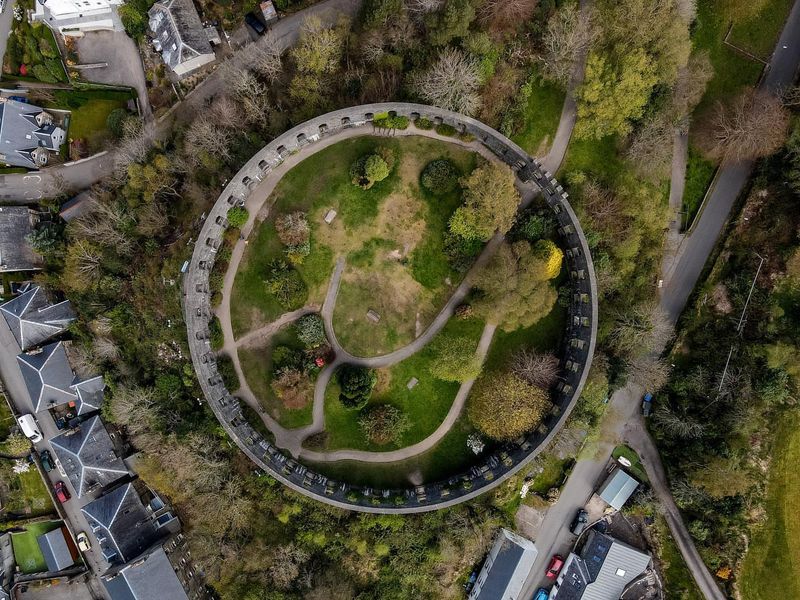
Perched atop Battery Hill, McCaig’s Tower offers breathtaking views across Oban Bay to the distant Atlantic Islands.
Visitors can enjoy a panoramic vista that stretches from the town’s bustling harbor to the serene waters beyond.
This strategic location not only provides a visual feast but also connects the tower to the broader landscape.
The sweeping views emphasize the tower’s role as both a historical monument and a vantage point for appreciating Scotland’s natural beauty.
6. Peaceful Gardens
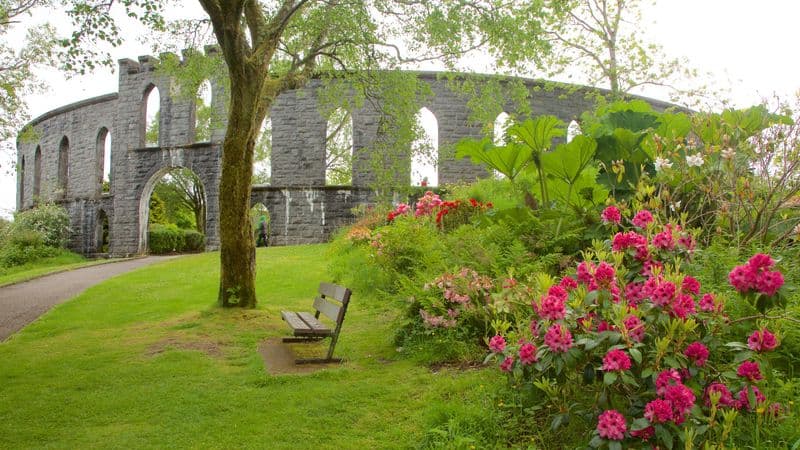
Within the tower’s shell lies a tranquil garden, meticulously maintained to offer a peaceful escape from the lively town below.
These gardens provide a serene setting where visitors can unwind, surrounded by the historical ambiance of the tower.
The contrast between the bustling town and this quiet haven highlights the tower’s role as a sanctuary.
The lush greenery and open spaces invite contemplative walks and leisurely relaxation, making it a favorite spot for both locals and tourists.
7. Listed Historic Monument

Recognized for its historical and architectural significance, McCaig’s Tower has been a Grade B Listed historic monument since 1971.
This designation ensures the preservation of its unique character and the protection of its cultural heritage.
The listing acknowledges the tower’s role in Oban’s history and its significance as a landmark.
It serves as a reminder of John Stuart McCaig’s lasting impact on the town, safeguarding the tower for future generations to appreciate its story and beauty.
8. Community Symbol
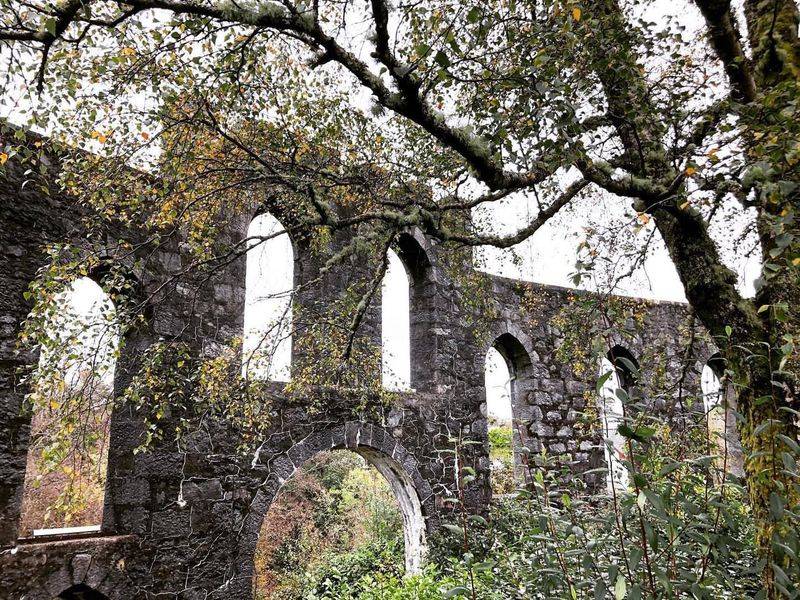
McCaig’s Tower has transcended its original purpose to become a beloved symbol of the Oban community.
It serves as a gathering place for locals and a must-visit attraction for tourists.
The tower’s presence on the skyline is a constant reminder of the town’s rich history, drawing people together to celebrate its legacy.
Events, weddings, and casual gatherings often take place here, cementing the tower’s role as a cornerstone of community life in Oban.
9. First Wedding

On May 26th, 1992, McCaig’s Tower witnessed its first wedding ceremony, uniting Keith Hirsch and Dora Fuchihara.
This event marked the tower’s new role as a romantic venue, adding a personal dimension to its historical significance.
The wedding was prominently featured in the Oban Times, highlighting the tower’s appeal as a unique setting for special occasions.
This milestone event reflects the tower’s evolving function, blending history with contemporary life.
10. Local By-laws
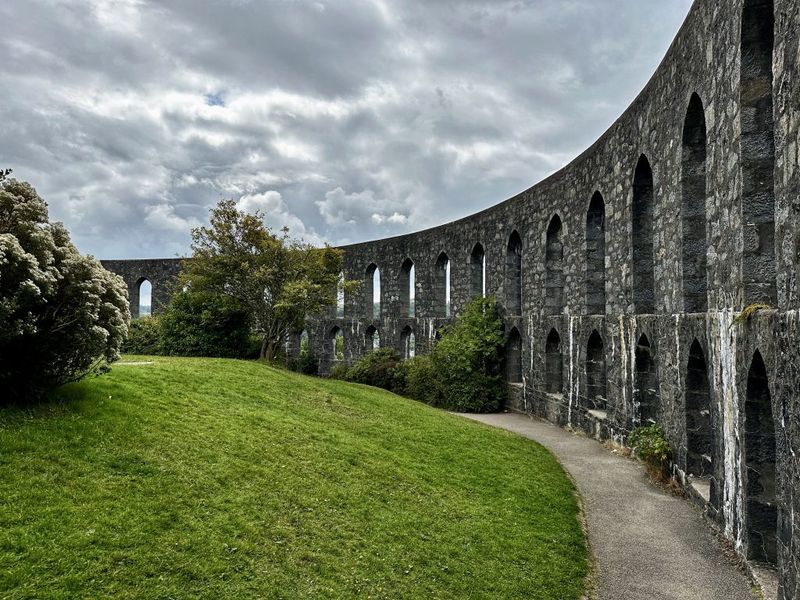
Visitors to McCaig’s Tower should be aware of local by-laws that prohibit the consumption of alcohol within its premises.
This regulation is part of the efforts to maintain the tower’s tranquil atmosphere and ensure a pleasant experience for all visitors.
Such rules help preserve the site’s integrity, reflecting the community’s commitment to its protection.
The by-laws serve as a gentle reminder to respect the historical and cultural significance of this cherished landmark.

